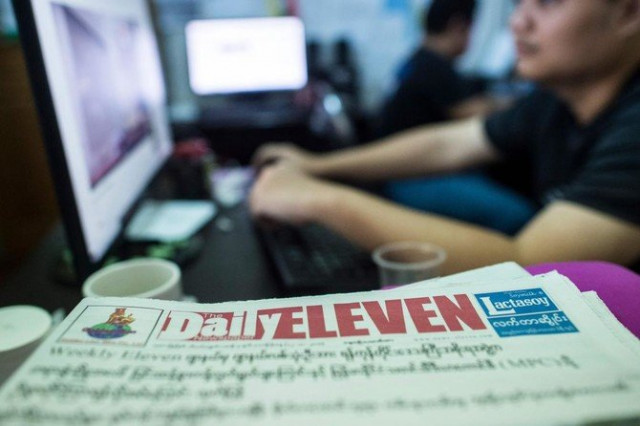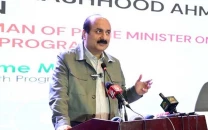Journalists identify WhatsApp as breeding ground of false information
A Digital Rights Foundation report cites social media platforms as the least worthy source of information

PHOTO: AFP
The report titled ‘Sifting truth from lies in the age of fake news’ is based on the experiences of 152 journalists and activists, who participated in a survey for the research.
Majority (88 per cent) respondents cited social media platforms as the least worthy source of information with WhatsApp being a top choice. Eight percent of journalists said that no one fact-checked in the newsroom they worked at.
The study endeavoured to pinpoint topics most susceptible to fake news and methods of dissemination. The report also examined fact-checking practices in Pakistani newsrooms.
Following are some of the findings of the report:
DRF found that journalists are not comfortable using the term ‘fake news’ to describe news that is not true as it has increasingly been used in Twitter campaigns for partisan propaganda and discrediting credible journalism.
It also found that politically contentious topics and censorship encouraged the spread of falsehoods online. Frequent accusations of ‘fake news’ have led to an increase in interest in fact-checking in newsrooms.
According to participants of the study, fake news spread on Twitter via seemingly fake, hyper-nationalist accounts. Others use doctored screenshots of major news outlets as ‘documentary evidence’.
The report also highlighted the need for fact-checking training in Pakistan as only 17 per cent of the respondents said they had received any such training.
Author of the study, Ramsha Jahangir warned that when journalists use ‘fake news’ in their reporting they give legitimacy to an unhelpful and increasingly dangerous phrase.
“The findings of the study point towards an increasing weaponization of context. Old images/videos are packaged as new, doctored screenshots of tickers go viral..anything with a kernel of truth is used out of context. This is not ‘fake news’. We are all victims of information disorder,” said Ramsha Jahangir.
DRF’s Executive Director Nighat Dad said that, “ The fake news phenomenon in the digital platforms is impacted by a complex set of deep-rooted ideological, cultural and political issues which demonstrates that this isn’t just a tech or media literacy problem, but also one that needs to be examined from a socio-psychological perspective. The lack of awareness among the public, the media practitioners and journalist community is a big impediment to fighting fake news on digital platforms and DRF hopes to overcome this challenge through advocacy and research initiatives."
DRF also put forth recommendations to tackle fake news and misinformation. It urged the government to involve key stakeholders, including civil society, media practitioners, press clubs, journalists’ unions and news organisations, in legislation plans to regulate media and information disorder.
Further, it also called for media organisations and press clubs to invest in fact-checking training and verification tools for their staff.



















COMMENTS
Comments are moderated and generally will be posted if they are on-topic and not abusive.
For more information, please see our Comments FAQ